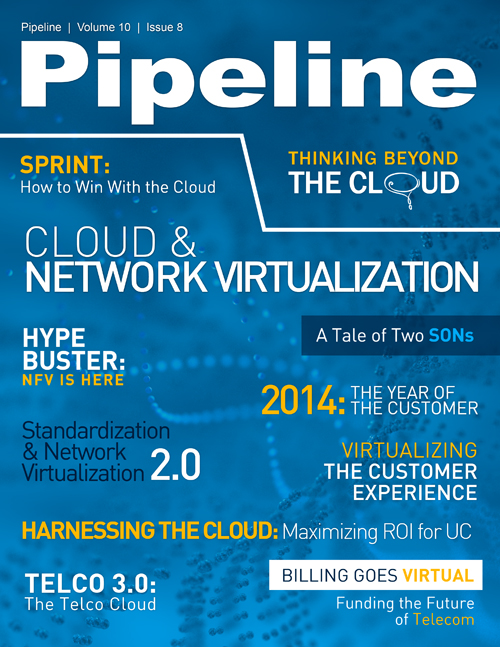Thinking Beyond the Cloud
By: Jesse Cryderman
 Aside from mobile, no technology has impacted telecommunications and, in fact, the world more than cloud. Tired of paying electric bills and buying computers?
Welcome to the cloud. Need more storage, or more licenses, or the latest software updates? No worries, the cloud has your back. Want to turn capital expenses into operational costs? Hello
cloud.
Aside from mobile, no technology has impacted telecommunications and, in fact, the world more than cloud. Tired of paying electric bills and buying computers?
Welcome to the cloud. Need more storage, or more licenses, or the latest software updates? No worries, the cloud has your back. Want to turn capital expenses into operational costs? Hello
cloud.
Cloud is no doubt capable and cool; but when we strip away the shiny exterior and glossy marketing veneer, what is left? Aren't many so-called "cloud" solutions just hosted solutions
in costume? The simple answer is "yes." A good portion of so-called "cloud services" do not meet the standard defined by the National Institute of
Standards and Technology, or NIST (more on that in a minute).
Director Communications Industry at Oracle, Brian Kracik, explains that some of the confusion stems from the many types of clouds. "The
definition of cloud is not binary, but rather a continuum," he told Pipeline. "And most organizations are gradually evolving toward a cloud model by adopting shared resources (e.g., consolidation), elastic scale-out architectures,
greater automation, self-service capabilities, and improved measurement, monitoring, and billing of services."
Stirring the pot a bit more, in the past year, personal private cloud storage has come online (pardon the pun), and offers additional advantages and competitive value compared
to consumer cloud services. These solutions can also be used to great effect by small and medium businesses (SMBs).
Now that we've moved past the hype cycle, it's time to think beyond the cloud and examine ways in which the cloud is evolving, or not, to meet customer demand. Also, although software
vendors look at cloud as table stakes, how many operators are actually buying cloud-deployed solutions over on-premise or hybrid? Further, how can service providers capitalize on these evolving
cloud trends?
What is Cloud and what isn't?
In order to think beyond the cloud, it is useful to review its definition. The NIST defines a cloud computing as being comprised of five essential components:
- On-demand service: The ability for a customer to provision services, as needed, per-use, without the need for human interaction. Cloud services offer 24x7 service that would be very costly in a traditional IT environment.
- Broad network access: A cloud offering can be managed from many virtual points, from mobile and terrestrial networks and multiple devices. This "allows non-IT users to provision their own resources and access them from many devices and locations," says Sanjay Kumar, a managing partner at VirtualCom Consulting.
- Resource pooling: This is where we often see the phrase "multi-tenancy," which refers to multiple users sharing the compute power of a single resource, through virtual or physical provisioning. In a private cloud, this might mean several business units within a company share one database server, while in a public cloud, multiple customers might share the computing power of one multi-core blade server. In this manner, hardware components are utilized to their fullest, instead of sitting idle.
- Rapid elasticity: Put simply, the ability to rapidly scale with demand. Time-to-market (TTM) is a critical competitive metric, and rapid scalability is a key enabler.
- Measured service: Transparency in usage and billing. Cloud services must have the ability to provide granular activity and usage date to the customer, along with transparent billing and charging procedures. Again, a common gripe made about traditional IT organizations is that they always show up to the party with an open hand asking for resources.


















